Built to replace older, non-standard types, the 56XXs combined Swindon’s practices with the need for engines on various Welsh lines.
After visiting their introduction on the Great Western Railway, we then look at which members of the class can be seen in the 21st century and which ones have yet to steam in preservation.
GWR 56XXs
The 1923 Grouping of the railways into the ‘Big Four’ impacted all four of the new companies. Although the GWR absorbed several smaller lines into them and didn’t face too much issue in the integration of management, rolling stock proved to be an issue.
Churchward had produced a range of standard engines for the GWR’s needs and also standard parts, reducing time and money in construction and maintenance.
Post Grouping, the GWR acquired just under a thousand engines of various designs. These engines used non-standard parts which made maintaining them hard and time-consuming. On top of this, many of these locomotives were wore out and needed scrapping. In order to address this issue, Collett design a new class of locomotives that used many standard Swindon parts but also could perform the roles the newly absorbed engines did.
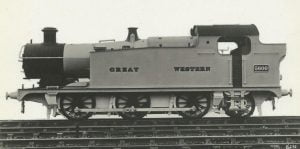
Design and Construction
When assessing the locomotive stock, it became clear that the 0-6-2 Tank engine was the most popular wheel arrangement. From here, Collett designed a tank engine using as many standard parts as possible, such as the Swindon No.2 boiler.
The basic dimensions for the class include: 0-6-2T wheel arrangement (coupled wheels – 4 foot (ft) 7 1/2 inch (in) and trailing bogie – 3ft 8in), Swindon No.2 boiler pressed at 200 lbf/in2, two cylinders (inside) (18in diameter and 26in stroke), total weight came in at 62 long tons and a tractive effort of 25,800 lbf.
The first batch, of 100 engines, was built between 1924 to 1927 at Swindon works. These engines were numbered from 5600 to 5699. Later in 1927 a further 100 locomotives were ordered, numbered 6600 to 6699. This batch differed from the first in being heavier. Due to Swindon works working to almost full capacity, 50 of the engines were built in 1928 by Armstrong Whitworth, the other 50 were built at Swindon.
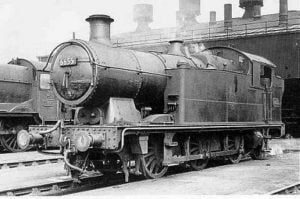
Performance in Service
The class had mixed reviews from footplate. The crews, from the 1923 absorbed companies, generally disliked the 56XXs. The tight curves of South Wales routes often lead to axle boxes running hot and in some cases engines have derailed.
To counter this, crews would drive bunker first as the trailing truck would help guide the locomotives into curves better. Despite this, the class produced a good amount of power for their size and welcomed on many lines over older engines.
Decline and Withdrawal
A couple of years after all 200 locomotives had been built, a new 0-6-0T class called the 57XXs were introduced into traffic. Once these engines started to be based across South Wales, crews began to favour them over the 56XXs.
The 57XXs were shorter and lighter engines, but with only a small power reduction over the 56XXs, making them more suited to working trains in South Wales. This lead to further 57XXs being order over 56XXs.
Decreasing coal traffic out of South Wales in the 1930s saw reallocation of some members to other parts of the GWR. The first withdrawals didn’t start until 1962, with three years later seeing the final engine of the class removed from traffic.
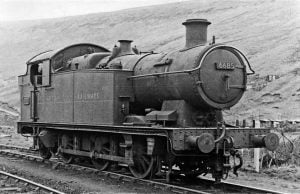
Preservation
Of the 200 built, nine have survived the cutter’s touch and some members can be seen running today.
- 5619 – Operational in BR Unlined Black with Late Crest on heritage railways, owned by the Telford Steam Railway. Originally only cosmetically restored, restoration to full working order was completed in 1981. Since then, 5619 has spent most of its working time away on loan, returning home to the Telford Steam Railway for special events. Last overhauled was completed in 2015.
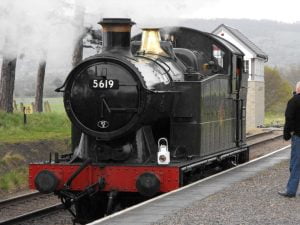
5619 // Credit Andy Reeve-Smith - 5637 – Operational in BR Lined Green with Late Crest on the East Somerset Railway, owned by the 5637 Steam Locomotive Group. Originally purchased by the Birmingham Railway Museum from Barry Scrapyard, a change of ownership saw 5637 brought to the Swindon & Cricklade Railway. Returning to steam in 1998, 5637 moved to the East Somerset Railway in July 1998, where the engine has been based ever since. The last overhaul was completed in Mid-2010.
- 5643 – Operational in BR Lined Green with Late Crest on the Ribble Steam Railway, owned by The Furness Railway Trust. Restored in Autumn 2006, 5643 is often on long hire to other persevered railways. The last overhaul was completed in 2013.
- 5668 – Awaiting restoration at the Kent & East Sussex Railway, privately owned.
- 6619 – Awaiting overhaul at the Kent & East Sussex Railway. Steaming again in 1984, 6619 was based on the North Yorkshire Moors Railway. After completion of its first overhaul, the engine spent time on several preserved railways, 6619’s last boiler ticket expired in Early 2015.
- 6634 – Awaiting restoration at Peak Rail, owned by the Waterman Railway Heritage Trust. Leaving Barry Scrapyard in 1981, 6634 arrived at the East Somerset Railway, where many components were collected for use on the engine. Moving to the Severn Valley Railway in 2009, an agreement was made whereby the SVR would restore the ‘bottom-end’ of the tank, the boiler restored at Crewe Heritage Centre and once returned to steam, 6634 would run on the SVR. Initially worked on at both places proceeded well but a few setbacks and a change of plan saw the tank move to the Peak Rail in Late 2017.
- 6686 – Awaiting restoration, owned by Vale of Glamorgan Council for use by the Barry Tourist Railway.
- 6695 – Undergoing overhaul at the West Somerset Railway, owned by the 6695 Loco Group. Leaving Barry for Swanage Railway in 1979, 6695 has since been restored. April 2017 saw the 6695 Loco Group and WSR sign an agreement which will see the tank operate on the WSR for 25 years. 6695 is expected back in traffic in 2019.
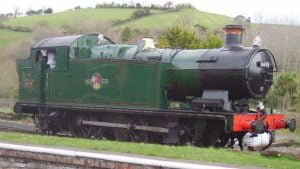
6695 // Credit 6695 Loco Group FB Page - 6697 – Static display at Didcot Railway Centre in GWR Unlined Green, owned by the Great Western Society. Brought straight from BR in 1966, 6697 was overhauled and ran during the 1970s until withdrawn requiring boiler work. Since then, the engine hasn’t steam.
We hope you have enjoyed this week’s Class Information. Stay tuned for this week’s Sole Survivor on an LNER class.
Where Next?
News Homepage
For the Latest Railway News
RailAdvent Online Shop
Framed Prints, DVD’s / Blu-Ray’s and more
LocoStop – The RailAdvent Community
Come and share your railway pictures


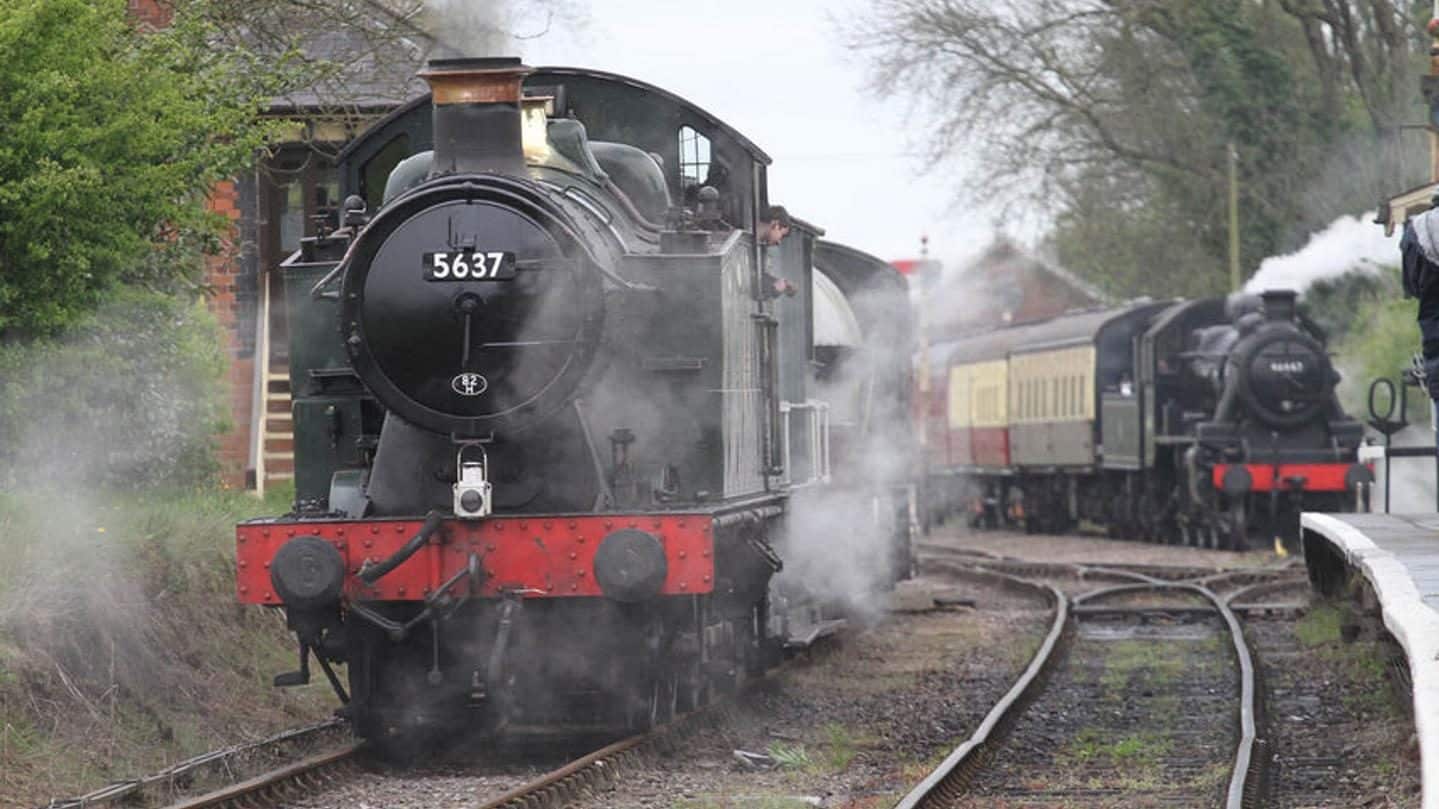

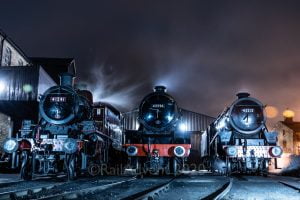

Responses
Hi
Some additional information for you:
6634 (not 6643!) went from Barry to the East Somerset Railway and was certainly not ‘in storage’.
A restoration team worked hard to collect the parts needed for an overhaul, including coupling rods, safety valves, and various other parts.
Eventually the project petered out, probably as people moved on and were not replaced, as happens so often.
All the best
Eddie Wearing
Hi Eddie,
Thank you for the information.
The article has now been corrected and updated.
Regards,
Jamie